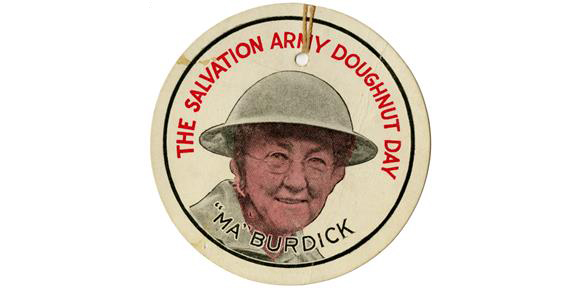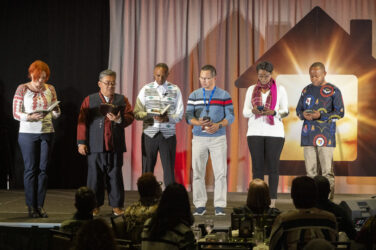by Nanci Gasiel, Central Historical Museum Director
As National Doughnut Day approaches, corps across the territory share stories of Doughnut Day’s origins and the heroism of WWI service workers. Like all great stories, it’s natural for these to evolve and be adapted over time. New research has shed some surprising light on two of these.
The First National Doughnut Day
Did you know that 2018 marked the 100th anniversary of the first national Doughnut Day? Generally, this annual event is said to have begun 81 years ago on June 6, 1938, in Chicago, Ill., but recently while searching the term “National Doughnut Day” in an online historic newspaper database, I found hundreds of articles which told a different story.
It appears the first Salvation Army Doughnut Day was held in Chicago as part of a “coffee and doughnuts” fundraising campaign which ran from August 11-19, 1918. A variety of fundraising techniques were used including soliciting corporate donations and street collections. On August 16, 40,000 doughnuts were offered for sale! It was estimated that each doughnut sold financed six doughnuts for soldiers in combat.
In September and October 1918, an announcement was published in a handful of newspapers that National Doughnut Day would be held November 11-18. The intent was to sell doughnuts for $1 each to fund part of The Salvation Army’s $3.5 million goal toward the United War Work Campaign. The money funded war service work the following year. It wasn’t a success that first year. The few corps known to have participated included Buffalo, N.Y., Des Moines, Iowa, San Francisco, Calif., and Tampa, Fla.
In 1919, The Salvation Army in the U.S. launched its Home Services Fund. Fundraising lasted a week and combined Doughnut Day events with other fundraising. Programs sometimes included actual World War I Doughnut Girls who cooked doughnuts in recreated war-time huts. During the 1920s Doughnut Day became a popular fundraising event held annually by corps nationwide, but by the mid-1930s few corps still participated.
Then in June 1938 Chicago held its first Doughnut Day after an eight-year hiatus. The funds raised supported the Army’s social services programs in the city. Over time, annual local and regional newspaper coverage omitted that Chicago had not hosted Doughnut Day between 1930 and 1937. Articles often completely failed to mention Doughnut Day events held nationwide between 1918 and 1937. Column space being at a premium, eventually coverage simply noted that Chicago hosted the first Doughnut Day in 1938.
Doughnuts fried in helmets
Wartime shortages often produce some memorable adaptations. Doughnut Girls recorded using wine bottles, sticks and even a baseball bat to roll dough. They wrote about their frustration with captured German field stoves and how they had to ship pie tins from home because the French only had tart pans. The variety of materials used to make early doughnut cutters is legendary.
It is telling that in their diaries and article interviews the vessels they used for doughnut frying are hardly mentioned. Captain Alice McAllister wrote in her wartime diary about using a large French vat with built-in firebox, and Adjutant Helen Purviance mentioned using a small frying pan in a 1920 article. Further descriptions of their fry pots and pans aren’t recorded until the 1960s. None of them mentions using soldiers’ helmets for cooking; neither do doughboys mention giving up their helmets for this purpose.
It seems this popular myth stems from a 1955 newspaper article in which the author confused the shallow WWI helmets with the deep WWII helmets that were designed to double as cookpots. This amazing tale took on a life of its own.
These two doughnut stories not only demonstrate the heroism and ingenuity of early Salvationists and the monumental challenges they overcame but remind us sometimes there is still more to the story. Before opening a new exhibit, posting on Facebook or delivering a presentation, the museum staff researches to see if there is new evidence to discover. This leads us to find some surprising and wonderful new chapters to some of our favorite Salvation Army stories.





